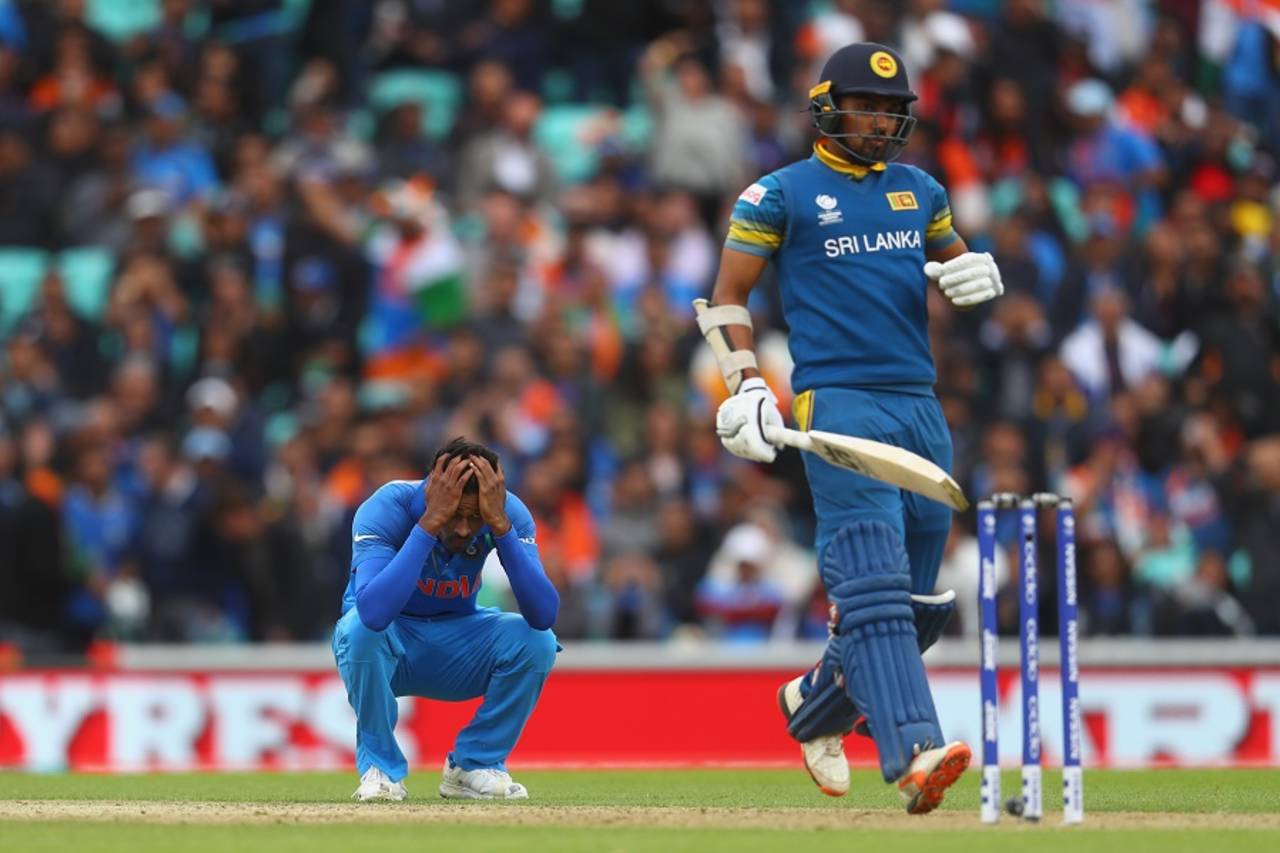Bowlers are getting eaten alive in ODIs
Bat v ball is no longer a contest when chasing 300 in rainy England becomes an easy task
Ian Chappell
10-Jun-2017

Even with an attack that had pace, seam and swing, India could not defend defend 321 against Sri Lanka • Getty Images
One of the critical duties of cricket administrators is to ensure the laws of the game maintain a reasonable balance between bat and ball, like a pair of scales see-sawing in the process of finding an even balance; a constant jiggling so neither the bat nor the ball is favoured too much.
On the early evidence of the 2017 Champions Trophy, there's currently a bar of gold on the scale representing the bat and a feather on the other side, denoting the plight of the bowler.
Three hundred runs for a 50-over innings is now the norm, and quite often it isn't enough to gain victory. And all this in an England summer blighted by rain squalls that you would normally expect to juice up the pitches.
The former world record-holding wicket-taker Fred Trueman used to bemoan the fact that the "last bluddy bowler to be knighted was Sir Francis Drake". The way things are heading, the modern bowler will only kneel before royalty to plead for mercy.
Despite the inclement weather, the ball has neither swung nor moved much off the seam. That normally lethal finisher Lasith Malinga of Sri Lanka has been reduced to pitching deliveries well wide of off stump in the hope that batsmen will either toe-end the shot to the man on the cover boundary or thick-edge it to the fielder patrolling third man.
Once a bowler is directing deliveries well wide of the stumps, all the classic ambushes are removed from the contest and the batsman has the upper hand. Once a bowler is purely trying to contain, often in the hope that the shot will only bring a four instead of disappearing deep into the crowd, the spectacle is basically reduced to a batting exhibition.
To emphasise the normalisation of the 300 total, it has twice been chased down in the first eight matches of this Champions Trophy, once against the much-vaunted Indian bowling.
India, thought to have one of the better balanced attacks in the tournament, were powerless to stop a vibrant Sri Lankan batting line-up imbued with the death-or-glory spirit of the modern batsman.

Six maniacs: hitting the ball into the stands once every over is the norm, not an aberration, today•AFP/Getty Images
There's no doubting the power, the nerveless approach and the innovative spirit of the modern batsman. They appear to be completely oblivious to the embarrassment a batsman used to experience when he holed out in the deep, playing what was deemed a reckless shot. It's now considered an abrogation of duty if a batsman doesn't try to send at least one delivery soaring into the stands each over.
If a fan heads to an ODI hoping to see the odd classic dismissal where the batsman is lured to his downfall after a series of searching deliveries, he had better be seated for the opening over.
In this century alone, the run rate in ODI matches has improved by nearly one per over. In this decade the number of sixes per innings has increased by one and a half times. The average per wicket is three runs better now than in 1999.
This is not a calamity of global-warming proportions, but if batting stats keep climbing at this alarming rate, a tipping point must surely be reached. There will come a time when an ODI becomes a batting exhibition rather than a contest.
The more the first-innings totals climb, the harder it becomes for the chasing side to stay in the contest. There are too few exciting finishes now in ODI games without the number being further reduced.
The administrators are going to have to give greater consideration to the evolution of bats. Boundary sizes will need to come under closer scrutiny, and some experimentation with the ball is required to aid bowlers in gaining some swing. Somehow the emphasis on wicket-taking rather than pure containment has to become a viable consideration.
The game can't become a batting exhibition where fans are baying for the bowler's blood. After all, Lions versus Christians eventually lost its lustre as a contest.
Former Australia captain Ian Chappell is a cricket commentator for Channel Nine, and a columnist